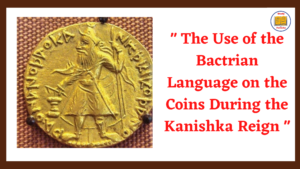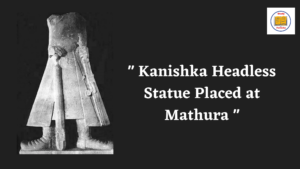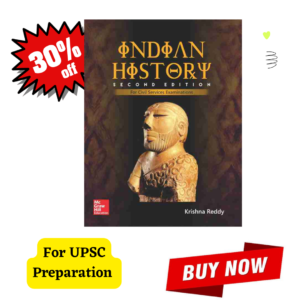Best Notes on Kushana Dynasty for Upcoming UPSC Exam Preparation. We covers all the Important Kushan Empire Rulers And their Achievements.

Table of Contents
The Legacy of Kushana Dynasty | Kushan Empire
The Kushanas were also Referred as Yueh-Chis ( Moon Tribe ) or Tocharians, who were one of the five clans ( Kuei-shang ) into which the Yue-chi tribe was divided. They were nomadic tribal people who were originally from the Stepped of North Central Asia. The Kushana First Occupied Bactria ( North Afghanistan ), Where they displaced the shakas, and gradually seized Gandhara, Replacing the rule of the Greeks and the Parthians in these Areas.
Ultimately They Set up their authority over the lower Indus basin and the greater part of the Gangetic basin. Their Empire Extended from the river oxus to the river Ganga from khurasan in Central Asia to Varanasi Uttar Pradesh almost the area of ( 9 modern countries).
Kujula Kadphises or Kadphises I ( 15 CE – 64 CE )
- He Amalgamated the Five Clans of Yue-chi tribe and laid the Foundations of a Unified Kushana Empire.
- He Minted Coins in Copper and Believed to have imitated the Roman ‘aurei’ type coins to facilitate Trade.
- His Coins have been found south of the Hindu Kush, Which Suggests that During His Reign the Kushanas Probably started their Movement towards Indian Sub-continent.
- His Coins also suggest an association with Buddhism.
- He Adopted the epithet ‘ Dharmathida ‘ and Sachadharmathida.
Vima Kadphises / Wema Kadphises II ( 64 CE – 78 CE )
He was the son of Kadphises I and started as a co-ruler with his father for some time but later also ruled independently. he Conquered gandhara from the parthians and further spread the kingdom to the east of the Indus till Mathura region. The political significance of kanishka rule lies in the fact that he integrated Central Asia with North India as a part of a single Empire.
it resulted in the intermingling of different cultures and increase in inter regional trading activities.
- He issued a large number of gold coins
- He was a firm Devotee of Shiva and Proclaimed Himself as ‘Mahishvara’ on his Coins.
- All his Coins both Gold and Copper have unmistakable sign of Shiva with his trident bull.
Kanishka King ( The Great Ruler of Kushana Dynasty )
He was the son of Kadphises II and is Perhaps the Most Famous King of Kushana Dynasty, Under whose Reign the Kushana Empire reached its zenith. It expanded from Central Asia to Afghanistan and North Western India, to further East into the Ganga valley and southwards into the Malwa region, and included Varanasi, Kaushambi, and shravasti in Uttar Pradesh and Sanchi in Madhya Pradesh.
The centre of this huge Empire was bactria as evident in the use of the bactrian language in kanishka’s coins and inscriptions.
- The famous rabatak inscription in modern bagran province Afghanistan presents valuable information on Kanishka
- Adopted the title of devaputra and has been shown wearing a Peaked helmet on some coins.
- Started the Shaka era ( 78 CE ) which is accepted as the beginning of his reign, and which is now used by the government of India for its calendar.
- He held the fourth Buddhist council at kundalvana near Srinagar in Jammu and Kashmir under the presidency of vasumitra. Kanishka was a great patron of Buddhism.
- it was in this council that Buddhism was split into two schools the Hinayana and the mahayana.

Kanishka Capitals
(1) Purushapura – ( Present day Peshawar ) – he built a giant stupa to house the Buddha’s Relics in the city of Purushpura. The building was still intact with all its magnificence When the Chinese Pilgrim Fa-Hien Visited the area later in the Early Fifth Century CE.
(2) Mathura – Mathura is the Second and Important Capital of kanishka Empire in the North Indian Region.
Famous Scholars & Personalities Under Kanishka Rule
(1) Ashvagosha
A Buddhist Scholar who wrote the Hagiographic Budhhacharita ( the Sacred Biography of the Buddha ) and Composed the Saundarananda ( a Sanskrit Kavya ).
(2) Charaka
He is known as the father of Ayurveda who wrote a book on medicine called charak samhita and also wrote the sasruta.
(3) Vasumitra
An eminent philosopher who authored the encyclopaedia of Buddhist philosophy called mahavibhasa.
(4) Nagarjuna
He is often termed an Indian Einstein who proposed the theory of relativity in his time in the form of a Sutra the Pranja Parimata Sutra. He was also a great exponent of the mahayana doctrine and propounded the madhyamaka (also known as Sunyavada school) which focuses on Sunyata or emptiness.
(5) Mathara
He was a minister who was noted for his unusual intelligence.
(6) Agesilaus
A Greek Engineer under whose guidance, it is believed the Great Stupa of Purushpura Was built.
Kanishka also patronised the gandhara and Mathura schools of sculpture. At Mathura a headless statue of kanishka depicting him as a warrior been found. He also controlled the famous silk route in Central Asia.

Towards the end of his long Reign, it appears that he led an unsuccessful military expedition into Central Asia against the Chinese and was defeated by general pan-chao and was forced to pay tribute to Chinese emperor Ho-ti.
Vasudeva II ( The Last Kushana Emperor )
The Immediate Successors of Kanishka Were Vasishka, Huvishka, Kanishka II ( Who adopted the title of ‘kaiser’ ) and Vasudeva I, who during his reign around the mid 2nd century CE took the Title Shaono Shao Vasudevo Koshano, which indicates that by this time the kushanas were totally indianised. Also it was during his reign, that the Empire started declining.
The names of these rulers and those of various kshtatrapas and Mahakshtrapas are found on a Number of Kharoshthi Inscriptions on a massive rock at Hunza ( Located between the Karakoram Highway and the Hunza river ).
Decline of the Kushan Empire
kushana power gradually declined from the early third century CE. The Kushan empire in Afghanistan and in the area of west of the Indus was Supplanted by the Sassanian Power ( of Iran ) in the Mid 3rd Century CE. however, some remnants of the Kushan Empire lingered on the Kabul valley.
Kapisa and Bactria till as late as the 4th century. The Decline of the Kushanas led to the resurfacing of several polities of both Monarchies and ganas in different parts of North India ( as Evident from the coins seals and Inscriptions )
- The Shaka Kshtatrapas in western and Central Asia
- The Arjunayanas in Bharatpur and Alwar Area.
- The malavas in Punjab and some portions of adjacent Rajasthan.
- The Yaudheya Gana in eastern Punjab and the adjoining areas of Uttar Pradesh and Rajasthan.
- The naga kings in and around Padmavati Region ( Identified with Pawata in modern gwalior M.P )

